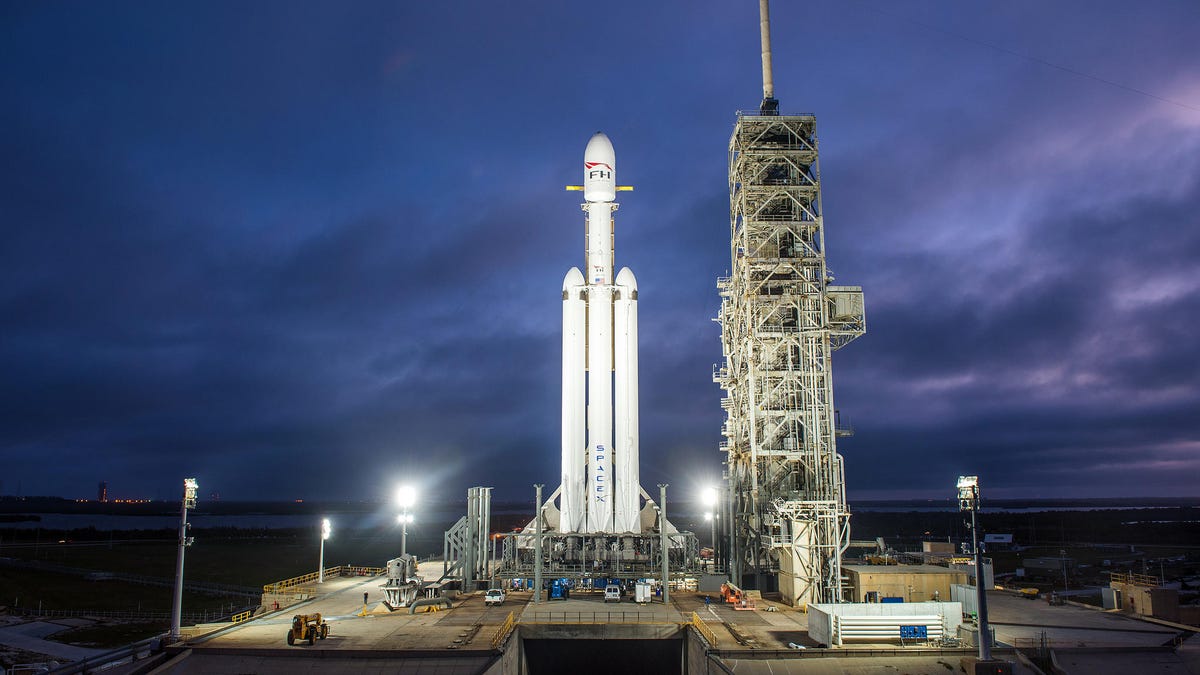NASA picks SpaceX Falcon Heavy to propel new Gateway lunar space station
Elon Musk's heavy-lifting launcher has been tapped for a pivotal assignment.

SpaceX shows off the Falcon Heavy rocket on the launchpad.
SpaceX is known for its dramatic launches and landings, and now it's landed another very high-profile launch contract from NASA. The agency has picked Elon Musk's rocket company to send the initial components of its long-awaited lunar gateway into space.
The Gateway is conceived as humanity's first long-term outpost at the moon, a kind of mini space station. But unlike the International Space Station that circles our planet in relatively low orbit, the Gateway will be in orbit around the moon. It will support upcoming astronaut missions as part of NASA's Artemis mission to return to the lunar surface and establish a permanent presence there.
Specifically, a SpaceX Falcon Heavy rocket system will launch the Power and Propulsion Element (PPE) and Habitation and Logistics Outpost (HALO), which are the key parts of the Gateway.
The HALO is the pressurized living quarters that will host visiting astronauts. The PPE is akin to the motor and systems that keep everything running. NASA describes it as "a 60-kilowatt class solar electric propulsion spacecraft that also will provide power, high-speed communications, attitude control, and the capability to move the Gateway to different lunar orbits."
Illustration of the Gateway at the moon.
The Falcon Heavy is SpaceX's heavy-lift configuration, consisting of three Falcon 9 boosters strapped together, topped by a second stage and the payload.
Since its 2018 debut lifting Elon Musk's Tesla toward Mars in a widely seen demonstration, a Falcon Heavy has only flown two other times. Falcon Heavy is scheduled to loft a pair of military satellites later this year and also to launch NASA's Psyche mission in 2022.
The launch of the Lunar Gateway's PPE and HALO is currently set for no sooner than May 2024 from Kennedy Space Center in Florida.
Follow CNET's 2021 Space Calendar to stay up to date with all the latest space news this year. You can even add it to your own Google Calendar.

